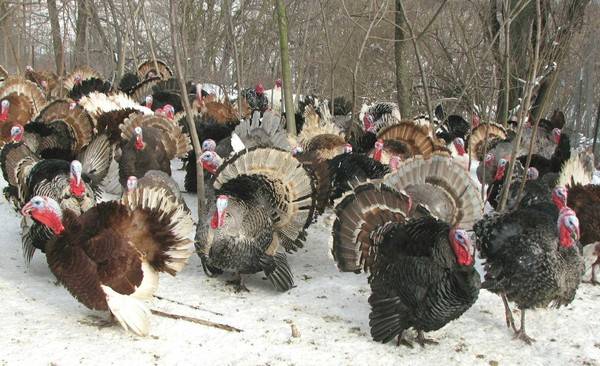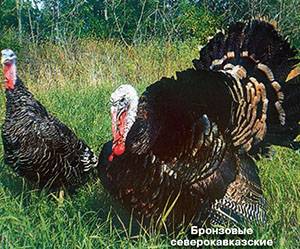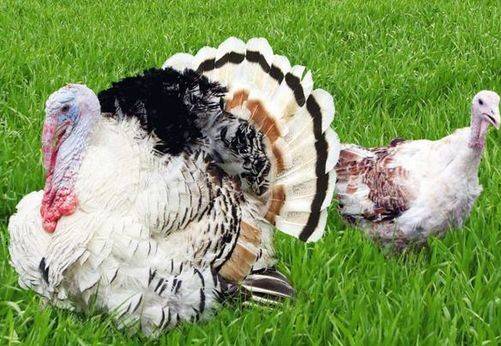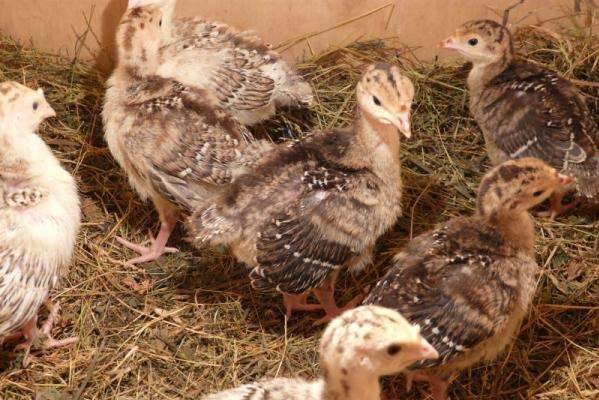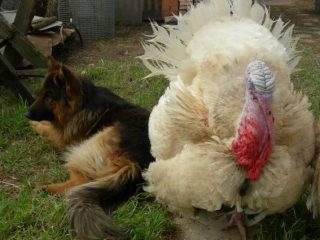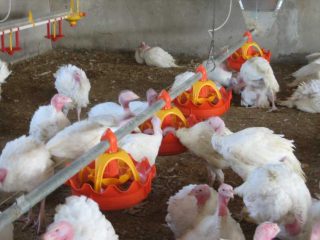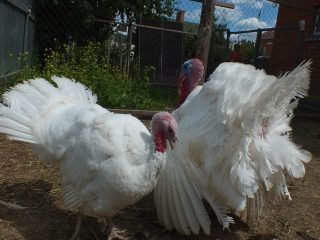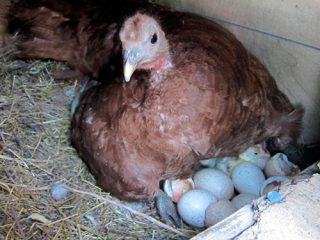Content
Turkeys have always been bred by the inhabitants of the Old World. Therefore, the bird is symbolized with the USA and Canada. After the turkeys began their "journey" around the world, their appearance has changed a lot. Many breeds have been bred by breeders from different countries.
Breeding turkeys have been engaged in Russia for a long time. But poultry farmers did not always get the desired result. Most often it was an insufficient weight of a bird or death from various diseases. Breeders have always strived to obtain a breed that would be the best in every way.
Breeding history
After crossing, we got a new branch of turkeys. Grown for several years and watched the hybrids. The North Caucasian breed was registered in 1964.
The resulting birds have become popular with animal lovers due to their unpretentiousness, both in terms of keeping conditions and feeding.
The advantages of the North Caucasian breed
Let's name the most important advantages:
- Each year, one female lays from 100 to 120 eggs: a turkey herd can be replenished in a year.
- Females have a developed maternal instinct. They will never leave the nest with a clutch, they are able to incubate the eggs of any representative of the bird farm.
- Caucasians have a wide chest, so white meat in the carcass is about 25% of the weight.
- North Caucasian turkeys weigh on average 12 to 15 kilograms. The weight of the turkey is slightly lower - from 8 to 10 kilograms. Youngsters, when properly fed at 3-3.5 weeks, can weigh about 4 kilograms.
Two new breeds of turkeys were bred, each of which has a number of distinctive features:
- North Caucasian bronze;
- North Caucasian silvery.
North Caucasian bronze breed
A new breed of bronze turkey was bred in 1946 in the Stavropol Territory. We crossed a female of the local breed and broad-breasted bronze turkey. Birds of a new breed, obtained by scientists from Pyatigorsk, began to be bred in the southern regions of Russia, in the north of the Caucasus. The turkey became widespread among the poultry farmers of the Central Asian republics. The people of Germany and Bulgaria liked the bronze turkeys. Adults and poults were exported to these countries.
Description
The name was approved ten years later. In bronze turkeys, the body is slightly elongated, a deep chest, strong long legs. Although the birds are small in size, males weigh up to 15 kg, females no more than 8 kg. Turkey poults can usually weigh about 4 kg at three weeks of age.
The feathers of birds are bronze, in the light with a greenish and golden tint. Most of the bronzes are in the tail, on the loins and on the back. The turkey's tail itself is chic: dark brown stripes on a matte black background. The turkey is smaller than the male, it is distinguished by growths under the beak. There are many feathers on her neck, but she was not lucky with her hair, there are almost no feathers. In addition, the turkey breast is greyish because the edges of the feathers have a white rim.
Survival features
North Caucasian bronze turkeys are adapted for pasture feeding. They feel good in various climatic conditions.
Turkeys lay eggs weighing up to 80 grams. At least 80 pieces per year. Egg production occurs at the age of 9 months. Eggs are light fawn, with brown specks. Fertilized are 90 percent.From eggs placed under a turkey, the marketable output of turkey poults is not less than 70%.
In addition, local breeds of birds are modified with the help of a turkey.
If we talk about the shortcomings, then it refers to the bluish-purple color of the young carcass. For this reason it is not recommended to slaughter young birds.
Turkeys North Caucasian silver
When breeding turkeys, the main focus has always been to obtain a large amount of meat and an interesting color of plumage. North Caucasian silver turkeys meet this standard.
Who are the parents of the breed
As such, the breeders had genetic material. Now it was necessary to select the necessary copies so that they fully fit into the following requirements:
- They had high productivity.
- They could survive in any, even confined spaces.
- Have a decorative plumage color different from other breeds.
- Possess a host of other advantages that other competitors lack.
But the main thing is to transfer positive properties over several generations of turkeys. In short, the characteristics of the breed should be dominant.
Description of the breed
Turkeys belonging to the North Caucasian silver breed are distinguished by a wide, protruding chest, wide, sloping back. The wings are well developed. Coral legs in turkeys are strong, strong.
The tail is luxurious, rather long. When open like a fan, you can admire the silvery-white plumage with beautiful stripes of black and fawn. The head is small, neat, but the turkey was not lucky with the hairstyle: the feather cover is insignificant.
Live weight of turkeys:
- A turkey at 4 months old - 3.5-5.2 kg.
- Adult turkeys up to 7 kg.
- Turkeys up to 16 kg.
Growing up occurs at 40 weeks. The female begins to lay eggs. The bird is fertile, so from one individual you can get up to 120 eggs per year, weighing 80-100 grams.
Reproduction
Eggs are white, brown with specks. Fertilization of eggs is excellent - up to 95%. Of these, as a rule, 75% of turkeys hatch.
The percentage of turkey offspring is almost the same.
Turkeys of the North Caucasian silver breed are excellent mothers. They can hatch not only their own eggs, but also chicken, duck, and goose eggs. They take care of any offspring with special trepidation.
Benefits
- The breed is valued not only for its large eggs, but also for its valuable meat. The yield is usually 44.5-58%. Most of all is white meat - brisket.
- Parents are able to transmit dominant traits to their offspring for eight generations: the genetic code is stable and reliable.
- The vitality of birds can be envied.
Conclusion
When breeders of the North Caucasus started breeding new breeds of turkeys, they took into account the needs of individual farms. Today, these birds are grown on an industrial scale, providing Russians with healthy and tasty meat.
